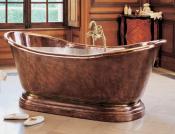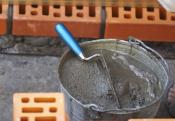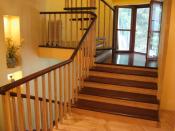Search
Login
Recommended
We insulate the loggia with our own hands, how to properly insulate the loggia
Plans for increasing living space by improving the comfort of a loggia or balcony are often puzzled by people who are faced with repairs in their own apartment. In the process, difficulties and questions arise related to the warming of the loggia, especially if you have to decide on the independent performance of work.
Content:
- We carry out work on the insulation of the loggia with our own hands and attract specialists
- The important point is saving space
- Warming of the loggia with foam video
- Incorrect insulation
- Penofol Installation
- We carry out wall decoration video
- Floor insulation video
We carry out work on the insulation of the loggia with our own hands and attract specialists
Initially, it is necessary to identify what actions you can actually perform yourself, and in the implementation of which - it is better to rely on the skill, skills and experience of professionals. It is highly recommended that two types of work be entrusted to specialists: glazing and laying the parapet (if necessary).

Glazing will be more correctly entrusted to a company that has been successfully working for a long time in the provision of these services. In this case, one should remember the characteristics of the glasses recommended for warming loggias and balconies: a two-chamber double-glazed window with a thickness of 32 mm.
An important point - saving the space of the loggia

The technology of warming the loggia with your own hands involves the creation of a thermal effect, in other words, the use of heat-insulating materials around the entire perimeter of the loggia or balcony. When choosing heat-insulating materials, attention should be paid to their heat-conducting properties, in addition, in a small space, an important aspect is the saving of usable area.
Warming of the loggia with foam
For example, penoplex panels, which are widespread and demanded in construction, will help to create not only comfortable conditions, but will also preserve useful space as much as possible. To warm loggias combined with a living room, a material with a thickness of only 40-60 mm will be required, such a layer of insulation will be sufficient even for areas with harsh climatic conditions. For the middle band, where winter temperatures can range from -20 to -25 degrees, a layer with a thickness of 50 mm will be enough.

Foam panels are attached to special, made of plastic, mounts, shaped like a mushroom. We recommend using fasteners with a length of 80-100 mm, which consist of the following components: dowel legs, made of plastic for a puncture of 8-10 mm and a trellised hat, also made of plastic, which, in fact, carries the function of holding and pressing foam plate.

Proper warming of the loggia initially involves a decision on the selection of the final coverage. When decorating with plaster, use the method of combined fastening. That is, penoplex is glued, then auxiliary fastened with fasteners. If the plaster is not planned, then there is an option to finish the balcony or loggia with plastic or drywall. With this solution, it will be enough to strengthen the foam tile with 5 fasteners. It should be remembered that it is necessary to use waterproof plasterboard for such repairs.
Incorrect warming of the loggia
Do not use film when performing thermal insulation. It is not right! The wall should be treated with a waterproofing agent. Slots must be treated with special mastic. It is considered a gross, unacceptable mistake to use a film to obtain a vapor barrier effect.
Special attention should be paid to the insulation of the ceiling. It is necessary to use a mounting gun, which will carefully process all the cracks. For such work, it is necessary to use a foam that does not contain toluene! In the production of foam panels, a quarter is sampled. This avoids end-to-end joints. In places of docking with walls and not tightly connected panels, you should also use mounting foam.
Penofol Installation

The next step will be the creation of layers that produce the functions of thermal insulation and vapor penetration. To create them, it is customary to use penofol. It consists of foil and polyethylene. Having closed pores, penofol has 100% vapor barrier properties. This material also refers to heat-reflecting materials that retain heat. It is laid with foil in the inner part of the loggia.

Penofol is made in several versions, including with a self-adhesive surface. The cost of warming the loggia depends on many factors. For example, a saving option is possible in the form of buying penofol 3 mm thick, with a one-sided foil coating. At the same time, it should be mounted on double-sided tape. The only correct use of it will be fastening in the joint, that is, not overlapping. The joints should be glued with aluminum tape.
We carry out wall decoration

The following stages of the repair process are directly dependent on the final coating. To decorate the walls with plastic, which is considered suitable for such work due to its ability to not change quality when exposed to direct sunlight, a wooden frame should be constructed from a bar. They strengthen it by drilling in a concrete wall, directly through the insulation, holes, planting the structure on self-tapping screws and dowels.
Of no small importance is the resulting emptiness between the penofol and the panel, which plays an additional role in the insulation of the loggia or balcony. When using a material such as GCR, it makes sense to install a metal frame. Suspenders are mounted on top of the penofol, the racks are fixed and a moisture-proof drywall is installed. Considering the warming of the loggia in the photo, you can see that there are many options for finishing, they allow you to create a fairly comfortable and aesthetically designed space.
Floor insulation on the loggia
Particular attention when warming the loggia with your own hands should be given to the floors. A variety of materials can be used as insulation, including: foam plates, expanded clay, glass wool. They have excellent thermal insulation qualities, are not inclined to change dimensions under the influence of temperature, and have a long service life. The choice in favor of a certain material may affect the cost of insulation of the loggia. When choosing any of the listed materials, construction of formwork and installation of hard coating will be required. Before starting work, we pay attention to the unevenness of the floor - they should be fixed with a preliminary screed.
The most affordable material for floor insulation is extruded polystyrene foam. Its installation is carried out using special glue; for more reliable fastening, plastic dowels and nails are used. Then the reinforcing mesh is installed, the floor is poured with a special mortar for screed. It is recommended to apply the mixture in two layers, while the second is applied after the first has dried. The total thickness of both words should not exceed 50 mm. At the next stage, you can install the facing material.






